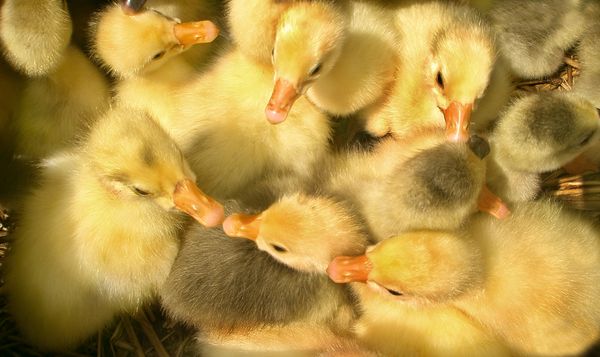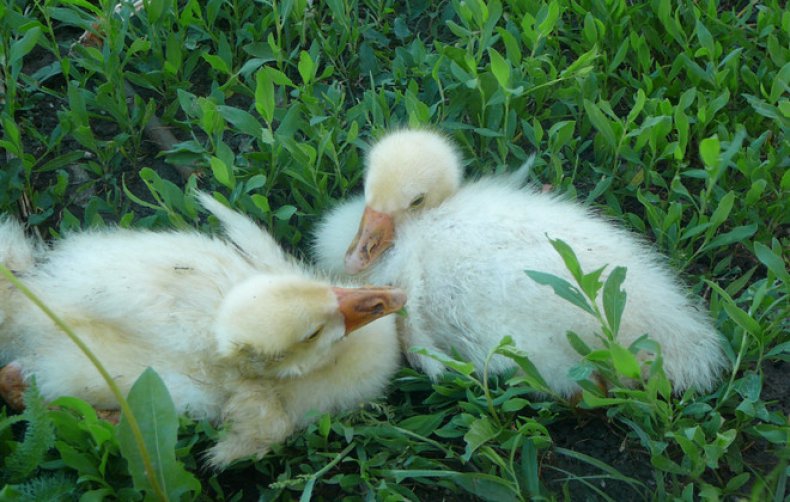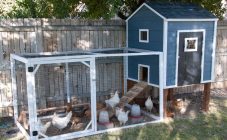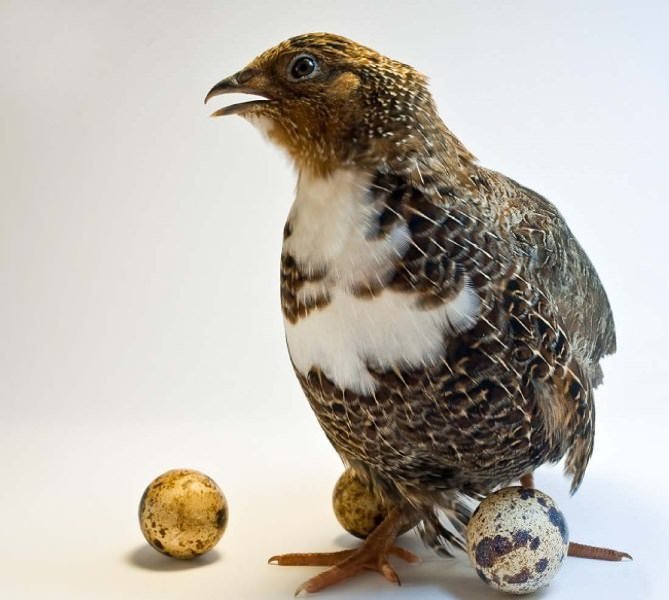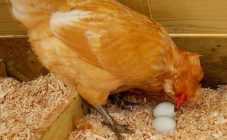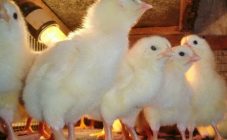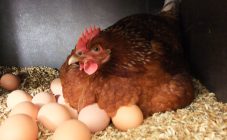Content:
Both a beginner and an experienced poultry farmer have to deal with many difficulties in keeping birds. Care of young animals requires the utmost attention. In worries, the farmer may not notice where the baldness and damage on the skin came from. Should we attach any importance to this? The answer can be obtained by understanding why the goslings pluck the fluff from each other.
Pecking birds: how to detect in time
Plucking of feathers from geese can occur at any age. However, there are periods of increased biting predisposition:
- Period 1 occurs at the age of 25 days. A new plumage appears, a rapid weight gain begins.
- Period 2 is celebrated at the beginning of egg laying.
Pecking causes great damage to the economy. Seeing how relatives begin to pull out the fluff from each other, the rest of the herd joins the process. Victims die from blood loss or from infection of wounds on the surface of the skin. Pecking of the cloaca can lead to intestinal prolapse, from which the goose also dies.
To detect this in time, you need to pay attention to the places of pecking:
- neck skin;
- cloaca;
- scallop;
- toes;
- head;
- back.
If bald spots, drops of blood, scratches are observed in these places, urgent measures must be taken. Before you treat birds or carry out prevention, you need to understand the reasons for this behavior.
Reasons for plucking feathers
All reasons veterinarians subdivide into those caused by unfavorable conditions and physiological characteristics of the bird.
Instinct
The reason why the goslings peck at their tails and backs is a natural instinct, the complete elimination of which is impossible. Geese love to nibble on everything: grass, owner's heels, toes and backs of their fellows. If the birds are not allowed to graze, their instinct will not be satisfied. Then everything that falls under the beak will be used. Therefore, an experienced poultry breeder tries to meet this need of pets. In spring and summer, it is as easy as shelling pears to do it - to let go of the herd to graze. In winter, when the birds are closed in the house, the grass can be imitated with colored ribbons, which will distract the goslings.
Another physiological feature of geese is their curiosity. Another breed, with a bright color, tufts, unusual plumage, will attract the rest of the herd. This can lead to feather pecking.
Cloaca changes
If the cloacal ring is stretched, drops of blood may appear, blood vessels may be damaged. This will draw the attention of other birds, they will begin to pinch this place. Changes in the cloaca may be associated with premature egg-laying. When the goose has not yet managed to gain weight, with the beginning of laying, the oviduct falls out.
Conditions uncomfortable for geese
- Heat... The temperature of keeping birds depends on their age. It needs to be lowered as the young mature. If a temperature of 32 ° C is normal for weekly chicks, then it will cause overheating in monthly chicks.
- Intense action lightand. Lighting around the clock is stressful for the chicks.Their aggressiveness increases, the goslings begin to pluck each other. Although additional light is needed for young animals, its duration should not exceed 15 hours per day.
- Dry air poor ventilation... Cannibalism occurs as a conditioned reflex to any state of stress.
The emergence of new neighbors
Introducing new birds into the house can lead to struggles in establishing hierarchy. Leaders will want to pluck weaker individuals to show who is in charge.
Small territory as a cause of conflicts among geese
This factor requires special attention. Why do goslings in a cramped poultry house pluck each other's feathers? Keeping geese in a small area leads to their increased pugnacity. They interfere with the movement of congeners and begin to fight to free up space.
Sometimes goose cannibalism manifests itself due to a lack of egg-laying sites. The owner must make sure that no more than 5-6 layers are kept in one place, otherwise there is a risk of birds eating eggs.
To avoid bird fighting for territory, you need to adhere to the stocking density norms.
| Goose age | Landing area (cm² per individual) |
|---|---|
| Goslings up to 2 weeks | 230 |
| Young growth from 3 to 9 weeks | 500 |
| Specimens from 9 to 17 weeks | 1000 |
| Geese over 17 weeks old | 1400 |
Thus, enough space will be provided for everyone, the geese will be able to freely approach the drinkers, feeders, and move around the poultry house.
Avitaminosis in goslings: symptoms
An unbalanced diet deprives birds of essential minerals and vitamins. Goslings need micronutrients for full growth and development. Lack of protein, calcium, vitamin B, protein in the feed leads to vitamin deficiency. Youngsters begin to look for ways to replenish nutrient reserves. Plucking of feathers begins, passing to pecking until blood.
You can determine vitamin deficiency by the following criteria:
- stopping and slowing growth;
- change in feather color;
- lack of appetite;
- poor feather growth.
The right diet to prevent cannibalism
To reduce the likelihood of pecking, you need to take care of the feeding regime: ensure a sufficient amount of feed and increase the nutritional value of the diet. As for the latter, the breeder needs:
- mix vitamin and mineral supplements into the feed;
- include grass in the diet;
- provide saturation with fats: meat, bone meal, cottage cheese, fish oil;
- Increase fiber content: Add carrots and beetroot
- increase the salt level to 0.4%.
In addition to enriching the diet, you need to ensure that the feed is fresh. Moldy, sour will lead to infections, which is highly undesirable.
Along with food, it is imperative to provide geese with sufficient water. She should always be in the drinker.
Solving feather plucking problems and prevention measures
If plucking has already begun, you need to:
- to put the initiators of cannibalism in a separate room;
- distribute geese in the house at the correct level of density so that everyone has access to food and water;
- reduce the illumination in the room;
- remove dead individuals from the premises in time (if there are victims);
- to temporarily resettle injured birds;
- ensure the proper level of humidity and ventilation in the house;
- within 3-4 days add salt to the feed (but not more than 1.5%).
Preventive measures:
- Beak trimming. A reliable but unsafe method. This operation can only be done by veterinarians or experienced farmers. It is carried out in goslings at 10 days of age or at the age of 2 months.Beak trimming errors will damage the beak and therefore shorten the bird's life.
- Taking bromine as a dietary supplement that suppresses excessive activity.
- Intake of citric acid in a ratio of 0.02-0.05 g per goose. Duration of admission is up to 3 weeks.
- An increase in the content of animal proteins in the feed (soy products, fish, meat waste, cottage cheese, milk powder).
- Walking geese in the fresh air (there will be something for the birds to occupy their beaks).
- Taking medicines, for example, biovetin in a ratio of 25 g per 500 individuals. The drug interferes with the feed, the course of administration should not exceed 1 month.
Cannibalism among birds leads to negative consequences. However, it can be avoided by adhering to the rules of keeping geese and observing preventive measures.
